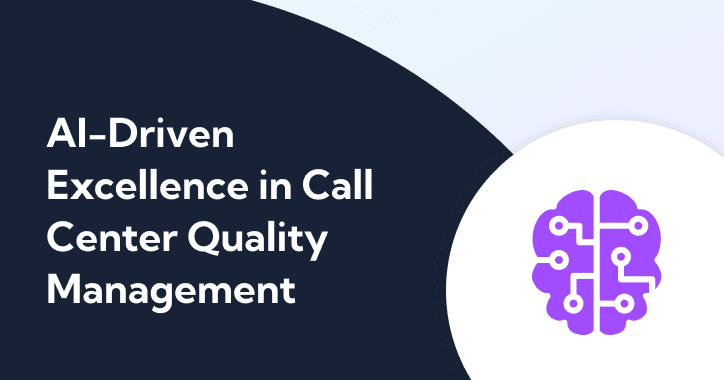Guest post by Jeremy Watkin
Over the course of my career leading teams in the contact center I’ve led in-house support teams that were 20 feet away, remote teams that were more like 20 miles away, and remote, outsourced teams that were 1,000 miles away.
Regardless of location, I’ve grown keenly aware of a couple of universal truths about myself as a manager. If you’ve seen the original Matrix movie, the conversation between Morpheus and Neo around the blue and red pill fits the point I want to illustrate perfectly.
The first truth is that it’s incredibly easy to convince myself that if our agents aren’t complaining to me, everything is going great with their experience. It can be assumed that they are working efficiently and couldn’t be more fulfilled in their work. This is that blue pill Morpheus spoke of that allows us to remain blissfully ignorant of the truth.
The second truth occurs when we take the red pill and “see how deep the rabbit hole goes.” I suggest that all contact center leaders follow Neo and take the red pill. When we truly observe the way our contact center agents work, we will most certainly find more ways to improve their experience than we bargained for.
In fact, it’s not uncommon to find backward processes, disjointed systems and tools, and dozens of concurrent browser windows and applications required to support a single customer. These inefficiencies drive agents bonkers and you can just imagine the impact it has on your customers.
Observing the Agent Experience
Several years ago, I was managing a remote, outsourced team. I made it a point to visit them three or four times per year. After a few days of sitting with the team in the contact center, observing their customer interactions and asking about their pain points, I came away with a huge list of action items — each item a meaningful way to improve both the agent and customer experience.
When is the last time you observed your agents in this way? And is this a regular practice or more of a once-a-year sort of thing? If this is a new practice for you, or it’s been a while, here are five simple tips to help get you started, ensuring that get the most value from the time spent.
1. Sit in the Contact Center
Are you physically distanced from the group that is supporting your customers? You need to figure out how to eliminate that distance — at least some of the time. If your agents work from an office or contact center you have the luxury of sitting by them on a regular basis.
If they are remote, join the channel in Slack (or your collaboration tool of choice) where they are talking about customer interactions and asking questions. In some modern, post-pandemic contact centers, this may be the closest you can get to your agents.
If you work with a good outsourcing partner, they should welcome you to their facilities with open arms or give you access to the team through some sort of screen sharing or screen recording technology.
Regardless of in person, remote, or outsourced, your goal is to be as close to the action as you can be. Don’t be afraid to get creative.
2. Listen With an Open Mind
As you position yourself in the contact center environment keep your mind and ears open and receptive to everything you see and hear from the team. Listen for key phrases like:
- “It’s so annoying when…”
- “Ugh, this customer is so…”
- “Why is this page always so slow to load?”
- “There’s no point in saying something. It’s always been this way.”
I could go on and on. These phrases aren’t attacks on your business and shouldn’t be perceived as such. This is no time to get defensive.
Instead, view these as your agents supporting each other. They need a place to vent frustrations, and let’s hope they haven’t fallen into the belief that this is just “part of the job” and there’s no point in speaking up because management isn’t listening. By listening without judging and defending, you begin to build the trust necessary to learn about and address these pain points.
3. Ask Questions
As you listen, don’t let these key phrases go unnoticed. Your job is to gently pull at these threads by asking questions that will help you learn more about the frustration. Ask questions like:
- How often does this happen?
- Have your colleagues had the same experience?
- Can you walk me through the process that led to this?
- What happened the last time you tried to tell your supervisor about this?
- How is this impacting your day-to-day workflow?
As you ask these questions, be sure to insert a heavy dose of empathy. Simple phrases like “I would be so frustrated if I encountered that on a daily basis” or “Wow, I can see how this makes it difficult for you to do your job” can go a long way.
4. Observe Intently
At some point, you need to see the agent experience for yourself. This means sitting with your agents, looking over their shoulders as they work.
If you’re physically next to them, pull up a chair, add a splitter to their headset, if they’re speaking with customers on the phone, and watch them do their job. If everyone is remote, a screensharing meeting in Zoom or huddle in Slack will do the trick.
Before I share some best practices here, I need to first acknowledge the potential awkwardness of this practice. Many agents don’t want to be observed and I as the observer feel bad when the agent I’m observing is obviously nervous and suddenly forgets how to type.
Do your best to keep the mood light. The more tense the environment, the less likely you are to get a true picture of the day-to-day agent experience.
That being said, the benefits here are huge. Here are some key things to look for as you observe:
- Look for ways agents could be using their tools more effectively. Perhaps they need to learn some keyboard shortcuts, or take advantage of pre-written responses, or practice using tools like Grammarly to check their spelling. I’ve found that there’s a reason star performers are more productive than others. They optimize tool usage and these are practices to discover and share with other agents.
- Look for things agents aren’t empowered to do. Are there certain issues agents always escalate because you have a “designated button pusher” in your company? Chances are, a whole lot more people can be trained to push that button. Or even better, that button can just go away and things just work the way they’re supposed to.
- Observe how many clicks, windows, and applications it takes to get the job done. When the customer is on hold for five minutes because the agent has to spend time navigating between ten different browser tabs, you may have a problem. Shaving a minute off of that hold time by consolidating information from two of those tabs into one or by implementing a new, better piece of technology can spell significant savings.
- Pay attention to the aggravation points. Contact center agents are amazing at finding workarounds — almost to a fault. Pay attention to nagging bugs, slow systems and errors. These should NEVER be accepted as “just the way things are.”
5. Take Action
Once you regularly observe your agents, you will have no shortage of insight. It’s time to organize and prioritize your list of ways to improve your technology, fix nagging issues, deliver new training, give them more access to systems, and more.
Think of this as a big feedback loop. After learning about the issues, address them and close the loop. Celebrate the quick wins and keep agents updated on the status of the larger initiatives.
When agents see that you’re working to improve their experience, they begin to trust that you have their best interests at heart and that, even though the job isn’t perfect, you are working to make it better. They will absolutely be more willing to speak up about their frustrations in the future.
Why Should You Observe and Improve the Agent Experience?
Nothing of what I’ve shared in this article is rocket science. If we care enough to listen to and observe our contact center agents, they will remain in the job longer and take better care of our customers. I’ve personally experienced this to be true over and over again, but don’t take my word for it.
According to a 2022 study by Medallia, 33% of contact center leaders identify agent turnover or attrition as a huge pain point. They go on to identify one of the root causes as “a lack of empowerment, autonomy, and engagement.” When you, as a leader, show your agents that you care enough to improve their experience they will be much more likely to stick around — even when frustrating issues arise.
A 2022 study conducted by CMSWire and Webex, found that 92% of senior leaders saw a direct correlation between the agent and customer experience. They understand that efforts to improve the experience for their agents ultimately improves the experience for their customers. The better you care for your agents, the better they will care for your customers.
The task is clear. Let’s remove those blinders, take that red pill and adopt the consistent practice of observing our contact center agents. This is the best way to uncover and address nagging issues and inefficiencies and show your team that you care. Ultimately, both your agents and your customers will thank you.
Jeremy Watkin is Director of Customer Experience and Support at NumberBarn, is cofounder of the CustomerServiceLife blog, Chief Engagement Advisor at CXAccelerator. He has more than 20 years of experience as a customer service and contact center professional leading high-performing and highly-engaged teams. Be sure to connect with him on Twitter and LinkedIn.






